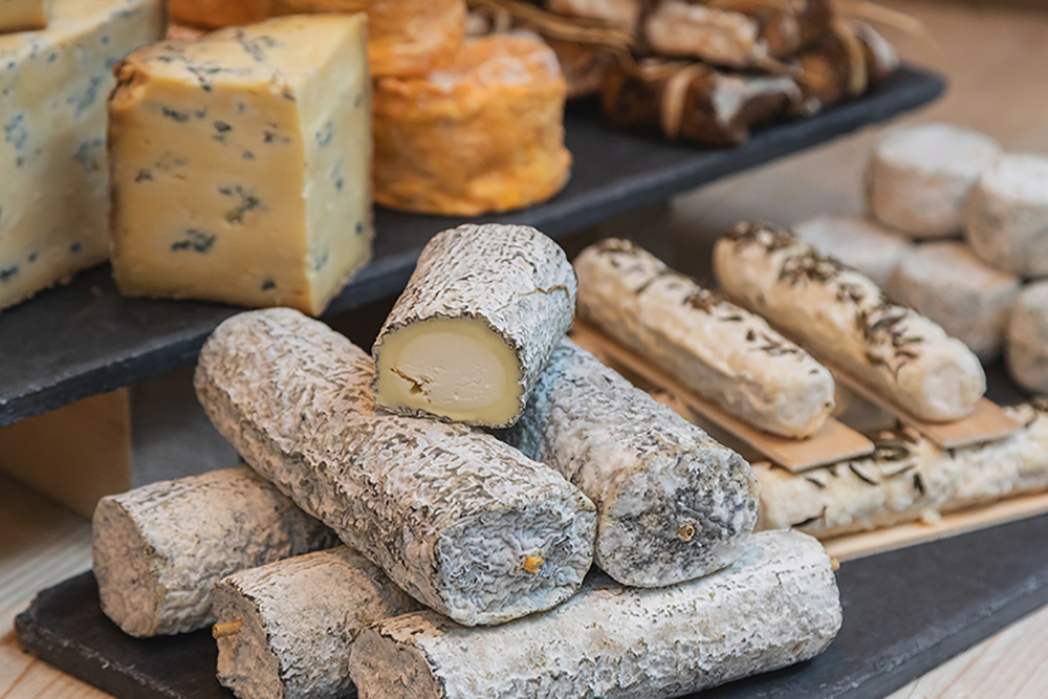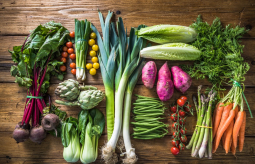Goat’s cheese is a surprisingly seasonal product, as goats only produce milk during the warmer months
While a lover of goat’s cheese himself, Laurence Lindars is very familiar with the British public’s reticence about this particular dairy product. “Goat’s cheese is one of the most divisive things on our counter,” says Laurence, who works on the Borough Market stall of French cheese specialists Mons Cheesemongers. “Some customers are: ‘Great, I love goat’s cheese’, and others are: ‘Can’t stand it, smells like a farmyard!’”
While there are some very ‘farmy’ goat’s cheeses, Laurence insists this is not always the case – far from it. “Raw goat’s milk brings so many other flavours, it’s actually quite rare that ‘this is a goat’s cheese’ is the first thing you think when you taste one.”
For Laurence, one of the wonderful things about goat’s cheese is its diversity. Firstly, there are the regional differences. He points to cheeses such as Crottin de Chavignol from the Loire region, which has a bright citric acidity, and mushroom and butter flavours – a style many people associate with French goat’s cheese. Buchette de Manon, which comes from Provence, a land of long, hot, dry summers, highlights the wonderfully rich and creamy milk of Roves goats, an ancient Provencal breed. Petit Blaja is made in the Pyrenees and can be matured to several different stages. This can result in cheeses with rinds that are yellow, orangey-red, brown and black, giving the cheeses an extraordinary diversity of structure, length and flavour. Three regions, three cheeses and three entirely different experiences.
“Another thing many people don’t realise about goat’s cheese is just how seasonal it is,” Laurence continues. The same cheese can taste different throughout the year. “Goats only produce milk in warmer temperatures. When outside, they eat different grasses, herbs and shrubs, a really diverse diet, and all these flavours come through in the cheese. When it is too cold for them to be permanently outside, some producers take their herds into specially adapted barns so they will still produce milk. When they do this, a feed is added to their diet which also impacts on flavour.”
Mons Cheesemongers has a pool of around 30 goat’s cheeses, with between eight to 12 on the counter at any one time: a few year-round constants sitting alongside a carousel of seasonal cheeses. “There is such variety that most people can find something that they like,” Laurence says enthusiastically.
“In order to truly enjoy what these cheeses have to offer, you need to embrace the notion of seasonality. Also, ask questions. What’s in season, where does the cheese come from, how was it made, what flavours are best at the time of year you are buying? With goat’s milk you will get some really interesting answers. If you can embrace this way of seasonal eating, there are so many amazing knock-on effects in terms of artisan producers, sustainable agriculture, the environment and our climate.”
boroughmarket.org.uk
_500_500_c1.jpg)
Spread goat’s cheese on a plate and top with a salad of blanched broad beans and broad bean tips, with a zingy sorrel dressing. It’s a fantastic, cooling appetiser for summer!
See Broad Bean Recipe






_500_500_c1.jpg)








